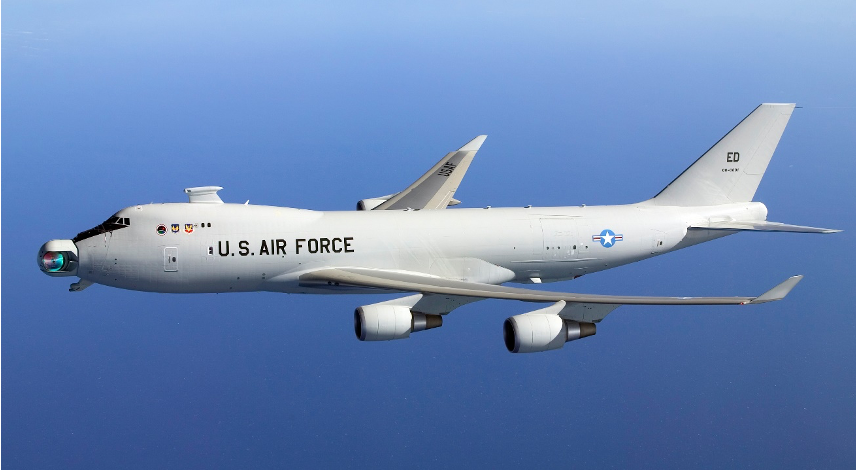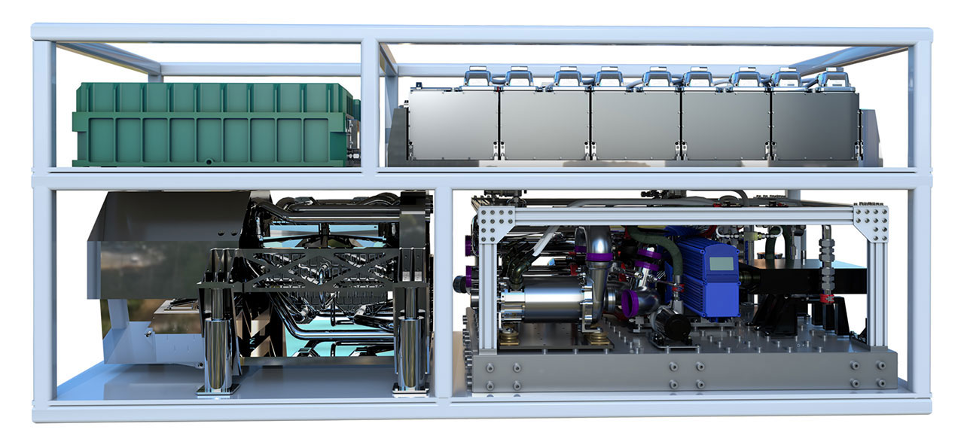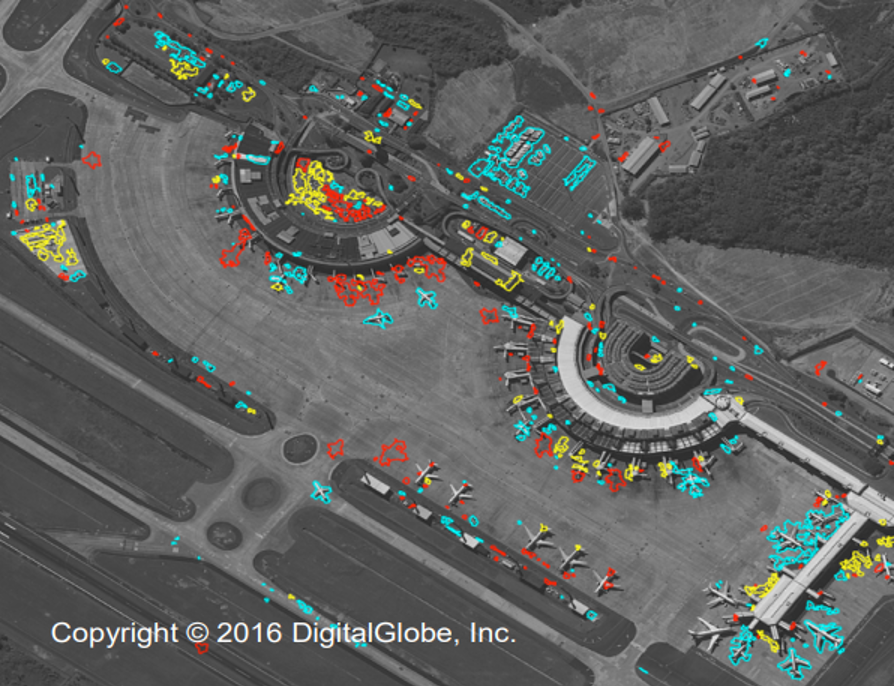Introduction
The world has witnessed enormous and continuous technological developments in recent years, some of which have changed our lives dramatically. What is striking about recent technological surge though, unlike the situation after World War I and II, the developments usually originated from the non-military world. Such technological evolution forced private companies to adapt themselves to emerging conditions because they would otherwise face the risk of vanishing. The main driving factor in such a competitive environment is disruptive technology, a term coined by Joseph L. Bower and Clayton M. Christensen in 1995.[1] It was not the invention of this term, of course, that expedited the technological development, nevertheless, this phenomenon changed the way private commercial sector approached to innovational thinking. On the other side, this change caused a shift in the defense industry, toward a new paradigm in which the disruptive innovations emanating from the commercial sector undermines an emphasis on technology-driven capability development.
Consequently, such technological advancements also resulted in a very complex strategic environment, since the rogue states, as well as non-state actors, have the ability to obtain capabilities which can asymmetrically affect the nature of conventional warfare. With the help of growing availability and flow of information around the world, it is now increasingly challenging to predict how global threats and opportunities will evolve. Therefore, the countries sharing democratic values should find solutions to cope with a diverse range of challenges. Generally speaking, the majority of the technological military innovations are used by modern armies to boost their offensive capabilities. Nevertheless, we also have to think about the other side of the coin, i.e., defensive capabilities. This diverse range of challenges also necessitates robust, adaptable, and up-to-date defensive thinking. While disruptive technological innovations are giving an advantage to the multi-dimensional threats and adversaries, at the same time, they provide a wide range of futuristic military possibilities for defense planners. With this article then, we will take a look at some possible disruptive technological applications, which may change the conventional thinking of Air and Missile Defense.
The conventional way of Air and Missile Defense
NATO defines Integrated Air and Missile Defense (IAMD) as follows: “NATO IAMD is the defensive part of the Alliance’s Joint Airpower, which aims to ensure the stability and security of NATO airspace by coordinating, controlling and exploiting the air domain. It incorporates all measures to deter and defend against any air and missile threat or to nullify or reduce the effectiveness of hostile air action.”[2] Similarly, U.S Joint Doctrine 1-02 states that IAMD is the integration of capabilities and overlapping operations to defend their country and its interests, protect their forces and negate an adversary’s ability to create adverse effects from their air and missile capabilities.[3] Those definitions simply mean that Air and Missile Defense (AMD) helps to win wars by defeating or mitigating enemy air and missile attacks.
Conventional IAMD briefly comprises active (means to intercept air-breathing targets and missiles) and passive defense (such as the use of cover, concealment, and camouflage, protective cover, and deception) measures. Command, control, communication, computers, and intelligence (C4I) is a crucial part of it as well. Indoctrination of these principles dating back to 1996, where the United States incorporated history’s AMD lessons and added command and control to tie it all together within a doctrinal concept known as the “Fours Pillars of IAMD”: passive defense (survive the attack), active defense (neutralize the attack), C4I (detect and respond to the attack), and attack operations (prevent the attack).[4] Although the ‘four pillar concept’ is no longer formally part of the U.S. doctrine, it is still valid and crucial in understanding the fundamentals of IAMD.
Directly speaking, in a typical active air defense scenario, the threats are handled by ground-based air defense systems and air defense aircraft. The ground-based defense systems are usually located in a way that they provide a layered defense and, therefore, redundancy. Air-breathing defense platforms are the gap fillers and assist the ground-based systems, especially in case those systems are saturated by electronic warfare and decoys.
In a missile defense scenario, things are a little bit different and complicated. When a missile is launched, it is initially detected by satellites with IR sensors. Nevertheless, this initial warning from the satellites does not provide necessary and precise information to the weapon systems. In this case, ballistic missile tracking radars comes into play. This radar then acquires the target and pass the necessary information to the ground-based interceptor systems. Those systems track the target missiles by their radars and fire the interceptors (missiles) for a ‘hit to kill’ destruction.[5]
The ways mentioned above are the expensive and risky ways to intercept an incoming aircraft or missile. There are also other means for effective IAMD, such as passive, non-kinetic, C4I, and left-of-launch[6][7] options. These options are essential for a cost-effective IAMD solution because it is clear that first responsibility of IAMD should be to deter an adversary by convincing them that attack is futile, then to prevent an attack in the first place by “killing the archer” rather than shooting down or absorbing his arrows. Should deterrence and prevention fail, joint IAMD melds active and passive defenses to mitigate and survive the assault.[8] However, when it comes to swarm attacks of ballistic or cruise missiles, most of the active defense systems fall short. Furthermore, when we think about the submarines capable of firing ballistic missiles with nuclear warheads, it is easy to realize how serious are the challenges of IAMD.
The defense companies are working hard and try to implement some of the disruptive technologies to cope with such challenges. Contrary to the impression that the defense industry is not leading the cutting-edge technological developments nowadays, there are numerous areas in which such disruptive technologies are implemented successfully. Some of these areas are robotics and autonomous unmanned systems, hypersonic, new undersea systems, stealth metamaterials, directed energy weapons, information and big data analytics, additive manufacturing, 3D printing and cyber capabilities.
Possible disruptive technology applications in the realm of IAMD
High Energy Laser & Directed Energy Weapons
A directed-energy weapon is not a new development in the defense industry at all. The U.S., for example, was developing a space-based neutral particle beam, a directed energy project that has its roots in the 1980s and aiming to use neutral particles to bombard incoming targets with enough energy to disrupt, incapacitate or kill the threat.[9] Easier said than done, the challenge has always been how to deliver enough energy focused on the right spot on a high-speed target, say a ballistic missile. Since a ballistic missile is most vulnerable during the missile’s boost phase when all the warheads are still on the boosting rocket, and the boosting missile’s prominent infrared signature makes detection and tracking straightforward, and the missile is not entirely up to speed yet, it was not a surprise that the first innovations came with an airborne laser (ABL). Although the first ABL project of the U.S. military, namely Boeing YAL-1 aircraft, was canceled in 2011, U.S. Missile Defense Agency (MDA) still has efforts to deploy a more powerful laser on a high-altitude UAV.

Figure 1- An image of Boeing YAL-1 aircraft, that cancelled in 2011
The problem with High Energy (H-E) Lasers is though; they are not yet powerful enough. If lasers in the 0.5–1-MW power range can be developed, multiple weapon applications would be possible. As stated above, currently, the U.S. MDA is following a path of developing increasingly more powerful H-E lasers capable of being deployed on a UAV and other platforms up to 100 kW laser.[10] The plan is to take the power of the H-E Laser system up to 50–300 kW, and eventually 500 kW over time.[11] DARPA’s High-Energy Liquid Laser Area Defense System (HELLADS) program is developing a 150-kW H-E laser weapon system with a weight goal of less than 5 kg/kW, approximately 750 kg. This development will enable UAVs to carry the HELLADS significantly increasing engagement ranges to hundreds of miles. Scaling this figure up from 150 kW to a power level of 1 MW, which approaches an ICBM lethality level, would require a laser of about 5000 kg., which becomes feasible for a large UAV.[12]

Figure 2: 100 kW-class High Energy Laser with scalable output (Courtesy of General Atomics)
On the other side, China already fielded a vehicle-mounted laser weapon, the LW-30 air defense system showcased at the Zhuhai Air Show in 2018. According to Army-Recognition, the LW-30 fields a 30-kilowatt laser capable of intercepting unmanned aerial vehicles and light aircraft at a distance of up to 25 kilometers.[13] Furthermore, China’s Anti Satellite (ASAT) program has been under development for decades, and according to a disclosed report by the Pentagon’s Defense Intelligence Agency (DIA), China’s military is expected to deploy a laser weapon capable of destroying or damaging satellites in low earth orbit by 2020.[14]
Many other countries are working on H-E Lasers, as advances in the last few years in solid-state lasers have increased prospects for practical weapons applications. H-E lasers would offer the potential of enabling low-cost, speed-of-light multiple shots, increasing the likelihood of destroying the missile. Recent regional conflicts showed us that UAVs, especially the armed ones, will play a critical role in future warfare. For that reason, H-E Lasers would be one of the most effective defense options for such threats.

Figure 3- The image of lW-30 unveiled at Zuhai Airshow China 2018
Low-Cost Overhead Persistent Sensing Technologies
Almost 60 years have passed after the first satellites were sent to space. At that time, the images provided by those satellites had low-resolution and were mostly not available for the public. Today, even small companies can provide good quality satellite imagery, thanks to the sheer number of satellites owned by private entities. Excluding a growing number of satellites weighing less than 50 kg, more than 600 observation satellites are expected to be launched by 2026.[15] The enormous number of satellites in orbit now ensures 360-degree pole-to-pole coverage and allows for some points on the planet to now receive nearly continuous coverage. In addition to greater availability and lower costs, these advances in sensor technology, coupled with big data analytics, small satellite and drone technology, improved inter-satellite coordination, and other relevant technologies advance the prospect of maintaining a continuous monitoring capability over strategic targets of interest.[16]
When we think about the importance of timely intelligence, possessing such continuous coverage will bring significant advantages to AMD forces. While such a capability would be of limited interest against silo-based ICBMs, Ballistic Missile Submarine (SSBN) bases, and strategic bombers, it could provide the basis for a more substantial capability to maintain a track of mobile ICBM launchers, even when they are flushed from their bases. Besides, the advent of technology enabling cooperating swarms of usually smaller vehicles designed to seek out targets holds the potential to change, even disrupt, submarine operations, including SSBNs.[17]
One of the crucial aspects of Missile Defense is the early warning. We have witnessed not long ago, how timely intelligence helped U.S forces in Iraq to have no casualties after Iranian ballistic missile attack on 8 January 2020. The U.S. has a vast network of radars and satellites dedicated to tracking missile launches around the globe, and that worked well on that night. However, these early warning systems are helpful, especially after the launch. In order to change the posture level of defense forces in crisis time, military leaders require indications and warnings, and satellites and other intel sources provide such indications. With the help of low-cost persistent sensing capabilities, it should be possible at some point shortly to continuously monitor mobile ICBMs and an adversary’s preparations before ballistic missile launch. Such a persistent surveillance capability, coupled with offensive forces, would enable offensive strikes against mobile ICBMs, especially given that, when deployed out of garrison, mobile ICBMs are much softer targets to strike than silo-based ICBMs.[18]
Artificial Intelligence (AI), Big Data Analytics
Since Artificial Intelligence (AI) has become our eras’ reality and would act as a force multiplier for future military operations, it is taking much attention among the defense agencies as well. With the help of AI, machine learning and big data analytics, analysis can be produced with greater efficiency and speed at a reduced cost. According to the predictions of analysts, by 2020, the world will produce 44 trillion gigabytes of data annually, an annual rate of growth of almost 60 percent.[19] Similarly, the satellites, UAVs, and other intel sensors are collecting terabytes of data every day. We mentioned above how vital, timely intelligence is when it comes to taking decisions within a short time. The introduction of AI to the intelligence process will, therefore, affect the speed of analysis. As an example, electro-optical change detection (EOCD) software is the first fully automated processing capability to work with panchromatic imagery, producing reliable detections, highlighting changes, and identifying second and third-order indicators. Thus, the analysts are saving time and catching those changes that the human analysts working a manual process might not even have noticed. The extension of this, in conjunction with persistent surveillance capabilities, to the detection of deployed bulky transporter-erector-launchers carrying ICBMs, is an apparent potential application. One such firm is a deep-learning company that specializes in using big data analytics to review large amounts of satellite and aerial imagery to pick isolated objects, some small, based on subtle clues in the imagery. [20]
AI has important implications for defense organizations. The impact of the AI technology itself is one side. The other side is, the combination of AI with other technological developments associated to offensive military operations (such as underwater drones, aerial drones, mobile missile launcher locations, antisubmarine warfare, counter-C3I, and the development of swarm tactics). Even though it seems that antisubmarine warfare has little to do with IAMD, when we think about the missile threats emanating from the submarines, they are always a big concern point among defense planners. Therefore underwater robotic devices (unmanned underwater vehicles or UUVs), like the Defense Advanced Research Projects Agency’s (DARPA) “Sea Hunter,” could, for example, perform search functions associated with antisubmarine warfare and mine warfare.[21] Such robotics, with the help of AI, would have more specific functions and would have the ability to act as a network or “swarms.”

Figure 4: A raster image of EOCD software highlight the changes at the Rio de Janerio Airport. Vehicles and aircraft arrivals (blue) and departures (red) can be easily identified. (Courtesy of Observera)
Cyber- Warfare and Security
Some argue that Cyber Warfare and Cyber Security are not (yet) disruptive technology. Nevertheless, thinking about the modern militaries have become extremely reliant on moving vast amounts of data around the battlefield as a regular part of operations, it is impossible to underestimate the risk of a cyber-attack and how disruptive such attacks could be. Cyber-attacks have the potential and ability to shut down both offensive and defensive systems. Furthermore, given that cyberattacks are very difficult to attribute to a specific country, group, or person, they are a viable weapon of choice for adversaries. Attacked parties will have very little evidence with which to make an attribution determination, and there appear to be limited political consequences for the conductors of cyberattacks.[22] That is why some countries are already establishing or considering to establish a separate Cyber Command structure within their military organization.
IAMD and especially BMD, is heavily dependent on complex C4I structures because not only the time required for decision making is relatively short, but also such structures are essential for effective battle management between highly sophisticated technologies, datalinks, sensors, and interceptors. It is no secret that one of the first targets for an adversary’s cyber-capability would be such battle management structures. Preserving a robust defense capability, therefore, depends on hampering such attacks, if not achieved, then mitigating the consequences.
As stated previously, “Left-of-Launch” defines a strategy based on a preemptive ‘strike’ with new non-kinetic technologies to defeat nuclear ballistic missile threats before they are launched. So, cyber capabilities could easily be considered as a left-of-launch non-kinetic option to neutralize the adversary, thus providing an excellent means of AMD. Such options are especially critical because, when we think about the vast number of threats versus limited interceptor capability, it is almost impossible, even for the most advanced militaries, to counter a large number of salvo missile attacks with kinetic defense systems only. In short, cyber technology may not be yet disruptive technology, indeed. However, cyber capabilities, coupled with AI, Big Data Analysis, and Robotics, will undoubtedly be a disruptive feature.
Conclusion
For years the defense industry was the driving force behind technological improvements. Nevertheless, private non-military companies are now leading the cutting-edge technology. It seems likely that the already incredible level of technological innovation the world has witnessed over the last 30-40 years will continue to accelerate going forward, with the private sector playing a predominant role. Accelerating technological change is not just the stuff of science fiction, nor is it downgraded only to technology communities. Increasingly it is affecting every aspect of global civilization. At the same time, it enables new modes of warfare and tools for hostile behavior, which also have different effects on the future security environment.
Countering threats emanating from the future security environment could only be achieved by maintaining a robust, versatile, and up-to-date defense mechanism. IAMD was and is always the crucial element of this mechanism. In an era of disruptive technologies, the defense organizations and communities do not have the luxury of waiting 10-15 years and spending tons of money on a single defense project anymore. Instead, they should pursue programs with realistic cost, schedule, and performance parameters. They can take advantage of such technological improvements, on the way of achieving an IAMD architecture that incorporates affordable, innovative capability improvements to all four pillars of IAMD—active, passive, C4I, and attack operations. Disruptive technology will, without doubt, contribute to all facets of IAMD but especially to non-kinetic operations, since they have the potential to turn an enemy’s advancements in sophistication into vulnerabilities, and at significantly reduced cost relative to kinetic options.
Some of the technology mentioned above, which have the potential of changing the conventional way of thinking in the realm of IAMD, is not yet mature enough. That is true. However, if it is possible to surpass a certain technological threshold and, besides, considering the combination of a few of these technologies, in couple of years, the defense mechanisms will likely be different from today.
* Bahri Kosar is a non-resident fellow at Beyond the Horizon ISSG
[1] https://hbr.org/
[2] https://www.nato.int/
[3] Joint Publication (JP) 1-02, Department of Defense Dictionary of Military and Associated Terms (Washington, DC: Department of Defense, November 8, 2010)
[4] JP 3-01.5, Doctrine for Joint Theater Missile Defense (Washington, DC: The Joint Staff, February 22, 1996)
[5] Bahri Kosar, Who should worry first, if the BMD radar in Turkey is to be shut down? Beyond the Horizon. Retrieved from https://behorizon.org
[6] https://missiledefenseadvocacy.org/
[7] Left of Launch defines a strategy based on a preemptive strike with new non kinetic technologies, such as electromagnetic propagation, cyber as well as offensive force to defeat nuclear ballistic missile threats before they are launched. The strategy is to attack by electronic embedment or through the electronic radar signatures of the threat’s command and control systems and the targeting systems of the threatening ballistic missiles.
[8] Geoffrey F. Weiss, Seeing 2020: America’s New Vision for Integrated Air and Missile Defense (Joint Force Quarterly – 76, 1st Quarter 2015)
[9] https://news.usni.org/
[10] “New Dawn,” Aviation Week and Space Technology, January 14, 2018, 76.
[11] James Drew, “MDA Advances Missile-Hunting UAV Programs,” Aviation Week and Space Technology, March 11 2018, 41.
[12] Christopher A. Bidwell, JD & Bruce W. MacDonald, Special Report: Emerging Disruptive Technologies and Their Potential Threat to Strategic Stability and National Security, p. 19 Federation of American Scientists (FAS), September 2018
[13] https://www.spacedaily.com/
[14] https://www.militaryaerospace.com/
[15] “Argus Eyes,” Aviation Week & Space Technology, November 26, 2017, 29.
[16] Ibid, 12, p28
[17] ibid
[18] ibid p.29
[19] Jamie Vernon, “How Will Big Data and Artificial Intelligence Change Science?”, Sigma Xi Speaks (May 2018).
[20] Ibid, 12, p.25
[21] Scott Savitz et al., “U.S. Navy Employment Options for Unmanned Surface Vehicles,” (Santa Monica, CA: RAND Corporation, 2013), xiv-xxv, Retrieved from https://www.rand.org/
[22] Ibid, 12, p32

